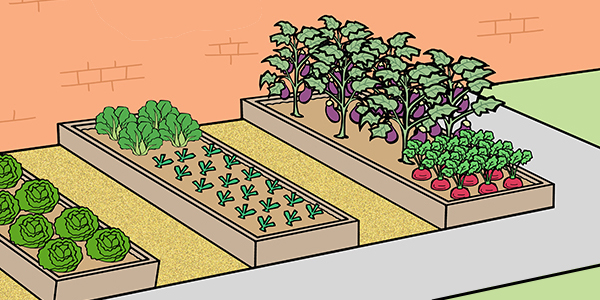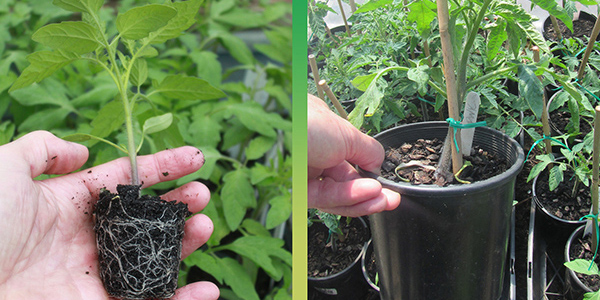All vegetable planting guides have recommended planting times based on zones. While these guides are a useful starting point they are at least to some degree inaccurate as the zones are too large to account for localised climate variabilities. This page looks at the zones that various planting guides use and suggests ways to make the timings of your vegetable plantings more accurate.
overview of planting guides for SE Australia
The various seed planting guides that cover South Eastern Australia (Tasmania, Victoria, South Eastern SA and Southern NSW) are divided into a series of zones that vary depending on the guide. These variations can be broadly grouped into three categories. They are :-
1. The Large Zones Category.
2. The Layered Category.
3. The Doughnut Category.
But none of them are entirely accurate as all their zones are large and towns and districts within a given zone can have hugely different climate patterns. Even the Ballarat and District Planting Guide, which was put together by experienced Ballarat vegetable gardeners and only covers the Ballarat area is not entirely accurate as there can be climate variations within this small area. Plus even the microclimate of each individual garden can vary, which will impact on the accuracy of a planting guide. For more information on these three planting guide categories see the Planting Guides Categories Details section further down.
strategies to improve vegetable planting accuracy
Below are some pointers to help you improve the accuracy of your planting times.
Cross reference at least two reputable planting guides. Avoid using the planting guides on the back of seed packets as their zones are much too large to be accurate.
Seek out advice from experienced local vegetable gardeners in your neighbourhood about the best planting times. As community gardeners are hotspots for experienced gardeners a visit to your local community garden should yield some excellent advice. It is also worth asking them about the best vegetable varieties to plant in your area.
Keep a diary of when you plant your vegetables, what varieties you planted and how well they went. Also include such things as the dates of the first and last frost and seasonal weather variations (hot summer, cool spring etc…)
In time you will be able to create your own planting guide specifically for your garden.

While a notebook diary is perfectly adequate for recording vegetable planting times I prefer to use an Excel spreadsheet. TOP: Extract of my spread sheet for recording vegetable plantings. BOTTOM: Extract of the one I use for recording plantings in seedling boxes. Each month I check the plantings for the previous couple of years to determine what to plant that month.
Every garden has its own microclimate. By observing it closely you can adjust your planting times based on these observations. For more information on microclimates see: Garden Microclimates. It is also worth familiarising yourself with your regional climate. For more information on regional climate variations see: Regional Climate.
Strategies To Improve Vegetable Planting Accuracy Summary
- CROSS REFERENCE TWO PLANTING GUIDES
- SEEK OUT PLANTING TIMES ADVICE FROM LOCAL GARDENERS
- KEEP A DIARY NOTING YOUR PLANTING DATES
- OBSERVE THE MICROCLIMATE OF YOUR GARDEN
Planting guides categories details
1. the large zones category
This category is usually found on the back of seed packets and covers all of Australia and sometimes even New Zealand. It is the least accurate of the planting guide categories as the zones are extremely large. Within each zone there are huge variations in climate.

An example of a large zones category. This one includes New Zealand as well as Australia.
2. the layered category
This category usually has the three zones in an ordered layer.
ZONE 1 (Cool): Covering Tasmania, Southern and central Victoria, and the highlands of Southern NSW.
ZONE 2 (Mild): Most of Southern Victoria, parts of SA coastal NSW.
ZONE 3 (Warm/Arid): Parts of northern Victoria, parts of southern SA and Western NSW.

An example of a layered guide. It is not very accurate as there are big climate differences between many of the towns and districts within a given zone. For example Melbourne and Ballarat are placed in the same zone even though their spring planting times are six weeks apart.
3. The Doughnut Category
This category focuses on Victoria and has a cool zone in the centre surrounded by a milder/warmer area, sort of like an odd shaped doughnut. While it is the most accurate of the three planting guide categories there are still big climate differences between many of the towns and districts within a given zone. For example Warrnambool and Bendigo are placed in the same zone even though their weather patterns are entirely different.

An example of a doughnut category guide map.




